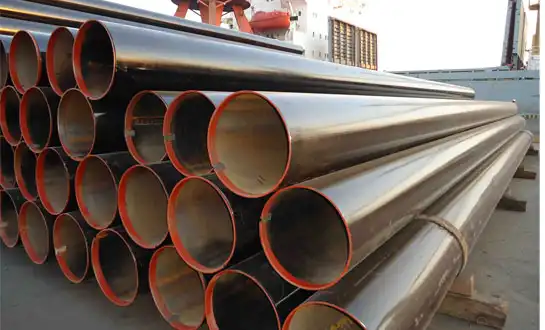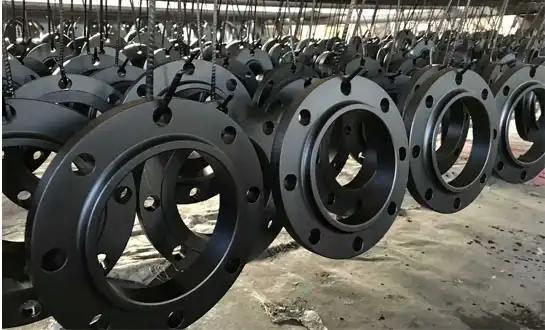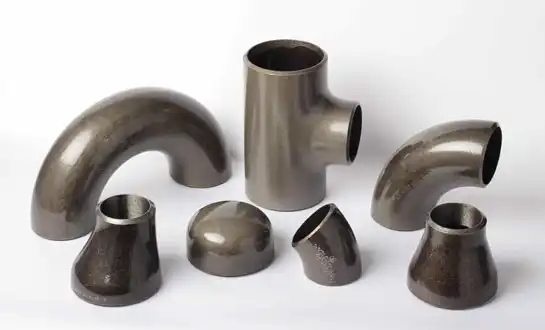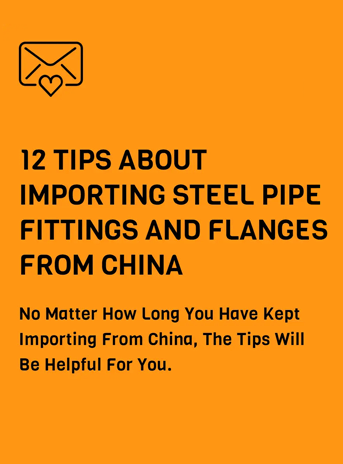Comparing Hot Bending vs Cold Forming for Large-Diameter Pipe Bends
When big industrial projects need pipes to be bent, makers have to choose between hot bending and cold forming. For hot bending, steel pipes are heated to high temperatures before they are shaped. This gives them more flexibility for complex shapes. For cold making, pipes are moved around at room temperature using mechanical force. When engineers and procurement specialists know the technical differences, cost effects, and performance features of these fabrication methods, they can choose the best options for custom pipe bends that meet standards for structural integrity, budget constraints, and installation timelines in a wide range of industrial settings.
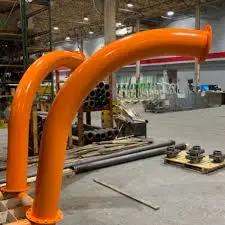
Understanding the Fundamental Differences Between Hot Bending and Cold Forming Processes
The Hot Bending Process and Its Technical Characteristics
Hot bending represents a thermomechanical process where steel pipes are heated to temperatures typically ranging from 850°C to 1050°C, depending on material composition. This elevation in temperature significantly reduces the yield strength of steel, making it more malleable and easier to shape without inducing excessive internal stresses or surface defects. The process begins with controlled heating in specialized furnaces, followed by precise bending using hydraulic equipment that guides the pipe through predetermined radius configurations. For custom pipe bends requiring large diameters exceeding 24 inches, hot bending provides exceptional control over wall thickness distribution, minimizing thinning on the extrados while preventing wrinkling on the intrados. After forming, controlled cooling procedures ensure proper metallurgical properties are maintained throughout the bend, preventing brittleness that could compromise structural performance in demanding service environments.
Cold Forming Techniques and Mechanical Principles
The cold forming process uses only mechanical force to shape pipes into certain shapes and sizes at room temperature. Rotating draw bending and ram bending are two of the methods that make up this procedure. Using cold forming to make custom pipe bends is mechanically advantageous because it eliminates the need for costly and labor-intensive heat treatment while maintaining high standards of dimensional accuracy and surface smoothness. As a result of work hardening, the yield strength of the cold-formed steel is actually higher in the bent area than it would be otherwise. It is important to carefully evaluate the following fabrication procedures since strain hardening lowers ductility. When the pipe diameter is small and the bend radius is moderate, cold forming is the method of choice. Commercial and industrial piping systems are increasingly utilizing advanced cold forming technologies for standardized custom pipe bends. These technologies now include computer-controlled precision, which provides reproducibility and uniformity throughout production runs.
Comparative Analysis of Process Capabilities and Limitations
When comparing hot bending and cold forming for large-diameter applications, several performance parameters emerge as decisive factors. Hot bending excels in producing bends with diameters ranging from small bore to massive 60-inch pipes, accommodating wall thicknesses that would prove prohibitive for cold forming equipment. The thermal process also handles exotic alloys and high-carbon materials more effectively. Conversely, cold forming maintains superior dimensional tolerances, typically achieving accuracy within ±0.5% compared to hot bending's ±1-2% variation. Surface quality differs substantially—cold formed custom pipe bends exhibit smoother finishes requiring minimal post-processing, while hot bent components may show scale formation necessitating cleaning. Lead times also vary considerably; cold forming generally offers faster turnaround for standard configurations, whereas hot bending requires more preparation time. Cost structures reflect these operational differences, with hot bending justifying higher per-unit expenses for specialized geometries, while cold forming provides economical solutions for higher-volume production runs.
Material Considerations and Metallurgical Impacts of Each Forming Method
Effects on Material Microstructure and Mechanical Properties
The metallurgical transformations occurring during hot bending fundamentally alter the grain structure of steel pipes. When steel reaches austenitic temperatures during heating, grain boundaries become mobile, allowing recrystallization processes that refine the microstructure. This thermal cycle can actually improve certain mechanical properties if controlled properly, producing custom pipe bends with balanced strength and ductility characteristics. In contrast, cold forming preserves the original microstructure while introducing deformation bands and increased dislocation density throughout the bent region. This strain accumulation creates work-hardened zones that exhibit higher hardness values but reduced elongation capacity. For applications requiring subsequent welding, cold formed pipes may present challenges as the work-hardened material responds differently to heat input compared to hot bent alternatives.
Wall Thickness Distribution and Structural Integrity Considerations
Wall thickness uniformity represents a critical quality parameter distinguishing hot bending from cold forming outcomes. During hot bending of large-diameter custom pipe bends, the combination of temperature-reduced strength and controlled mandrel support enables relatively uniform wall distribution, with thinning typically limited to 10-12% on the outer radius. Cold forming, particularly for larger diameters and tighter radii, experiences more pronounced wall thickness variations, sometimes reaching 15-20% thinning due to mechanical stretching. This differential impacts pressure ratings and stress calculations, requiring engineers to factor safety margins accordingly. For critical applications in power generation or high-pressure process systems, these thickness variations directly influence hydraulic analysis and code compliance verification.
Residual Stress Patterns and Their Long-Term Implications
Residual stress distributions created by hot bending versus cold forming follow distinctly different patterns. Cold formed custom pipe bends retain substantial residual stresses concentrated in the bent region, with tensile stresses typically appearing on the outer surface. These locked-in stresses can approach 40-60% of the material's yield strength, potentially contributing to stress corrosion cracking in corrosive environments. Hot bending, when followed by proper cooling protocols, generally produces lower residual stress magnitudes as elevated temperatures allow stress relaxation during forming. For large-diameter applications, stress relief annealing becomes a common consideration, though cold formed components more frequently require this additional processing step.
Economic Factors and Practical Selection Criteria for Industrial Applications
Cost Analysis Across Project Scales and Production Volumes
The economic comparison between hot bending and cold forming encompasses capital equipment investment and operational expenses. Hot bending facilities require substantial infrastructure including industrial furnaces and specialized handling equipment, resulting in higher fixed costs. For custom pipe bends manufactured in small quantities, these costs translate to higher per-unit pricing. However, when specifications demand large diameters or tight radii that cold forming cannot accommodate, hot bending becomes the only viable option. Cold forming equipment generally offers lower operational costs per piece for moderate-diameter pipes and standard bend angles, with faster cycle times and reduced energy consumption benefiting high-volume projects.
Timeline Considerations and Project Scheduling Impacts
Production timelines represent another crucial differentiator. Cold forming operations typically complete custom pipe bends within shorter cycle times, particularly for standardized configurations. Hot bending introduces longer cycle times due to heating duration and controlled cooling periods. Lead time planning must also account for facility capacity—cold forming shops exist in greater numbers with broader geographic distribution, while hot bending capabilities concentrate in fewer specialized facilities that may experience longer backlogs during peak demand periods.
Quality Standards and Inspection Requirements by Forming Method
Quality assurance protocols vary between methods. Cold formed custom pipe bends undergo dimensional verification including wall thickness mapping and ovality checks. Hot bent components require similar inspections plus additional scrutiny of surface conditions and metallurgical analysis. Both methods must demonstrate compliance with applicable codes such as ASME B31.3 or API standards. Third-party certification through organizations holding ISO 9001:2015 accreditation, GOST-R compliance, or SGS validation provides additional confidence for export applications.
Conclusion
The choice between hot bending and cold forming for large-diameter custom pipe bends manufacturer depends on comprehensive evaluation of technical requirements, material specifications, and project economics. Hot bending offers unmatched capability for large diameters and specialized materials, while cold forming provides cost-effective solutions with excellent dimensional control for moderate applications. Both methods deliver reliable performance when properly applied.
FAQ
1. What diameter range is most suitable for hot bending versus cold forming?
Cold forming works efficiently for pipes up to 24 inches in diameter, while hot bending becomes advantageous for larger diameters exceeding 24 inches. For custom pipe bends above 36 inches, hot bending often represents the only practical fabrication method. The transition point depends on wall thickness, material grade, and bend radius requirements.
2. How do residual stresses differ between the two forming methods?
Cold forming introduces higher residual stresses that may reach 40-60% of yield strength, potentially requiring stress relief heat treatment. Hot bending produces lower residual stress levels when proper cooling protocols are followed. For critical applications involving custom pipe bends in corrosive environments, understanding these stress patterns helps engineers predict long-term performance reliability.
3. Which method provides better dimensional accuracy and surface finish?
Cold forming generally achieves superior dimensional tolerances within ±0.5% and produces smoother surface finishes. Hot bending typically exhibits ±1-2% dimensional variation and may show surface oxidation requiring cleaning. However, hot bending offers better wall thickness uniformity for large-diameter custom pipe bends with complex geometries.
4. What are the typical cost differences between hot bending and cold forming?
Cold forming offers lower per-unit costs for moderate-diameter pipes in higher production volumes. Hot bending commands premium pricing but becomes cost-competitive when specifications exceed cold forming capabilities. For custom pipe bends requiring unique geometries or large diameters, hot bending's capability often justifies the investment.
HEBEI RAYOUNG PIPELINE: Your Trusted Custom Pipe Bends Manufacturers
At HEBEI RAYOUNG PIPELINE TECHNOLOGY CO., LTD., we deliver exceptional custom pipe bends combining advanced fabrication expertise with stringent quality standards. As leading pipes and fittings manufacturers, we provide both hot bending and cold forming solutions tailored to your project specifications. Our ISO 9001:2015 certification, GOST-R compliance, and SGS validation ensure every product meets international standards. Contact us today at info@hb-steel.com to discuss your custom pipe bends requirements and discover how our commitment to excellence can support your next project.
References
1. American Society of Mechanical Engineers. (2020). ASME B31.3: Process Piping. New York: ASME Press.
2. Gresnigt, A. M., & Karamanos, S. A. (2009). Local Buckling Strength and Deformation Capacity of Pipes. Journal of Pressure Vessel Technology, 131(5), 041201-041210.
3. Liu, Y., & Wang, Z. (2018). Advanced Manufacturing Technology for Large-Diameter Steel Pipe Bending. Materials Processing Technology, 256, 112-124.
4. Tang, N. C. (2000). Plastic-Deformation Analysis in Tube Bending. International Journal of Pressure Vessels and Piping, 77(12), 751-759.
5. Zhan, M., Yang, H., Huang, L., & Gu, R. (2006). Springback Analysis of Numerical Control Bending of Thin-Walled Tube Using Numerical-Analytic Method. Journal of Materials Processing Technology, 177(1-3), 197-201.

Need a quote? Want to see samples? Just say hello. We’re friendly. We’re fast. And we’re ready when you are.
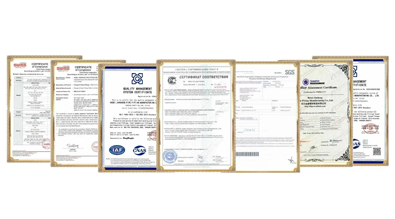
Welcome to RAYOUNG – Strong Pipes, Stronger Promise
